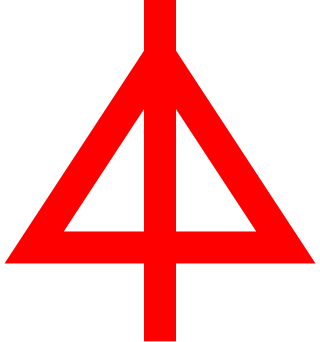The 1st Infantry Division, was one of the original infantry divisions of the Reichswehr and Wehrmacht that served throughout World War II.

The 13th Panzer Division was a unit of the German Army during World War II, established in 1940.

The 16th Infantry Division of the German Army was formed in 1934. On 26 August 1939 the division was mobilized for the invasion of Poland (1939). It participated in the Battle of France in August 1940. The division was then split, resulting in two independent units: The 16th Panzer Division and the 16th Motorized Infantry Division. Then later, from 1944 onward, combined with other non 16th elements, was known as the 116th Panzer Division.

The 29th Infantry Division was a unit of the German army created in the fall of 1936. It was based on the old Reichswehr 15th Infantry Regiment and drew its initial recruits from Thuringia. It was upgraded to 29th Motorized Infantry Division in the fall of 1937. The division was also known as the Falke-Division.

The German 20th Infantry Division was an infantry division of Nazi Germany.

The 3rd Infantry Division was an infantry division of the German Army that fought in World War II. The division was established under the cover name Wehrgauleitung Frankfurt in 1934 by expanding the 3rd Division of the Reichswehr. It was redesignated Kommandant von Frankfurt shortly afterward, and took on its bona fide name when the formation of the Wehrmacht was announced in October 1935. In March 1939 the division took part in the invasion and occupation of Czechoslovakia.

The German 5th Infantry Division was formed in October 1934 and mobilized on 25 August 1939. The division's troops were garrisoned in Konstanz, Ulm, and Freiburg. When formed, the division consisted of the 1st, 2nd, and 3rd battalions of the 14th, 56th, and 75th Infantry Regiments, the 1st, 2nd, and 3rd Battalions of the 5th Artillery Regiment, the 1st battalion of the 41st Artillery Regiment, and assorted 5th Division support units.
The 19th Panzer Division was an armoured division in the German Army, the Wehrmacht, during World War II. It was created from the 19th Infantry Division.

The 28th Jäger Division was a German military unit during World War II.

The 32nd Infantry Division of the German Army was mobilized on 1 August 1939 for the upcoming invasion of Poland. At that time, it consisted of the usual German infantry division elements: three infantry regiments of three battalions each, one three-battalion regiment of light artillery, one battalion of heavy artillery, a Panzerjäger (anti-tank) Battalion, a reconnaissance (Aufklärungs) Battalion, a Signals Battalion, a Pioneer (Engineer) Battalion, and divisional supply, medical, and administrative units.

The 14th Panzer Division was an armoured division in the German Army during World War II. It was created in 1940 by the conversion of the 4th Infantry Division.

The 97th Jäger Division was a light infantry Division of the German Army during World War II. It can trace its origins to the 97th Light Infantry Division which was formed in December 1940. It was then redesignated the 97th Jäger Division in July 1942. It fought in the Battle of Kursk and suffered heavy losses. It was then transferred to the lower Dnieper river area and fought well during the retreat through Ukraine. It was transferred to Slovakia in October 1944 and surrendered to the Red Army near Deutschbrod in May 1945.

The 30th Infantry Division of the Wehrmacht was created on 1 October 1936 in Lübeck and mobilized on 26 August 1939 for the upcoming invasion of Poland. At that time, it consisted of the usual German infantry division elements: three infantry regiments of three battalions each, one three-battalion regiment of light artillery, one battalion of heavy artillery, a panzerjager (anti-tank) battalion, an aufklärungs (reconnaissance) battalion, a signals battalion, a pioneer (engineer) battalion, and divisional supply, medical, and administrative units.

The 113th Infantry Division was an infantry division of the Wehrmacht in World War II.

The 197th Infantry Division was a Wehrmacht division in World War II. It was activated on 1 December 1939.
The 137th Infantry Division was a major fighting formation of the German Army (Wehrmacht). It was created in October 1940, and first saw combat in Operation Barbarossa as part of Army Group Centre. The division remained on the central sector of the Eastern Front, where it participated in heavy fighting.

The 15th Panzer Division was an armoured division in the German Army, the Wehrmacht, during World War II, established in 1940.

The 384th Infantry Division was formed during the winter of 1941/42, as part of the 18th wave. All infantry divisions of this wave, numbers 383 to 389, were referred to as “Rhine Gold” divisions. The 384th was sent to the 3rd Panzer Corps, 1st Panzer Army, just in time to be involved in defensive fighting during the Soviet offensive in the Second Battle of Kharkov, early in the summer of 1942. Afterwards, the division took part in the offensive operations that led to Stalingrad. After the Soviet counteroffensive, Operation Uranus, most of the combat elements of the division were split between the 44th and the 376th Infantry Divisions, but both were surrounded at Stalingrad and destroyed.

The 258th Infantry Division was an infantry unit of the German Army in World War II.
The 290th Infantry Division was a German infantry division in World War II. It was formed in the Munster Training Area in Wehrkreis X on 6 February 1940 and surrendered to Soviet forces at the end of the war as part of Army Group Courland.
















